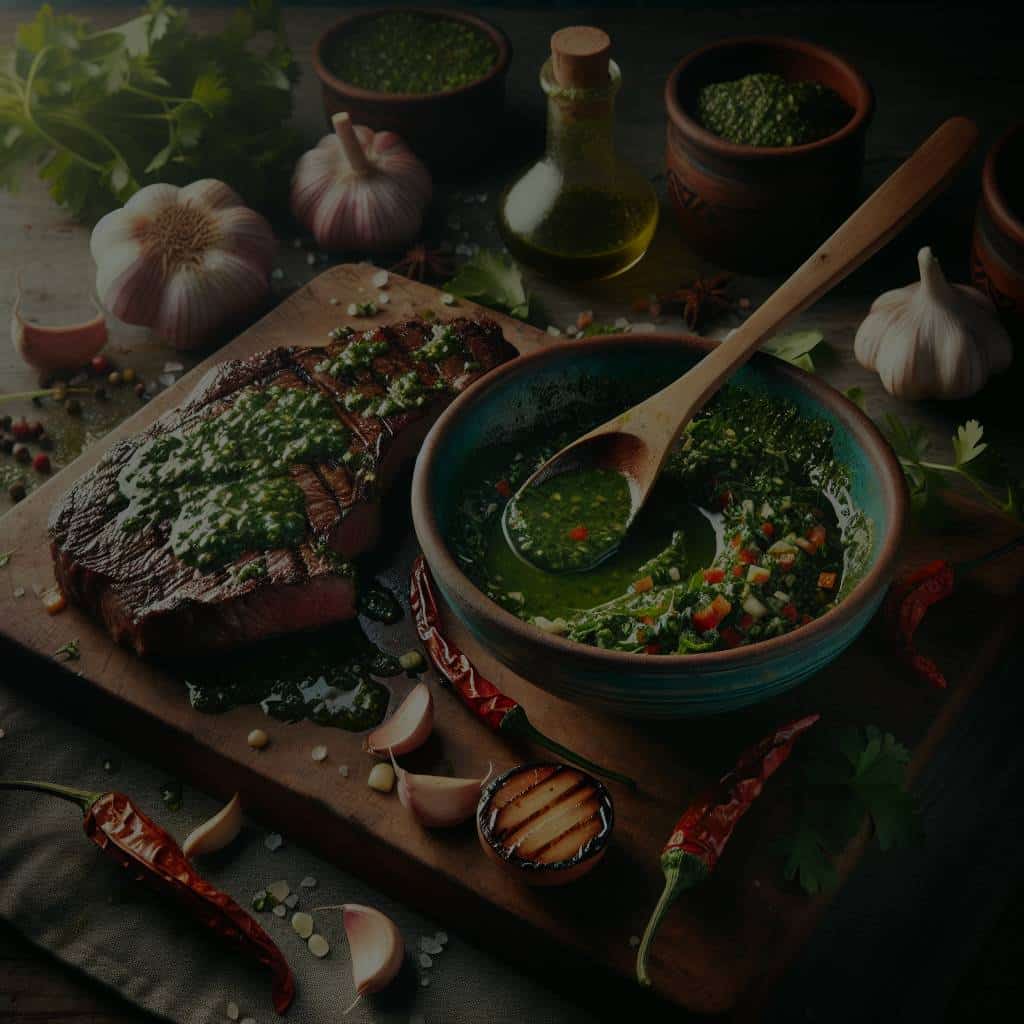Can You Master the Art of the Argentinian Chimichurri for Steak?

Among the many culinary delights the world has to offer, the Argentine chimichurri stands out, especially when paired with a perfectly grilled steak. This flavorful sauce, a staple in Argentine cuisine, is a favorite among meat-lovers and cooking enthusiasts worldwide. But what is the story behind this vibrant, red sauce, and how can you master making it at home? In this guide, you will learn the secrets of the chimichurri sauce.
The Story of Chimichurri
The origins of chimichurri are rooted deeply in the culinary tradition of Argentina. It is said that the sauce made its first appearance during the cooking of asado, Argentina’s traditional barbeque. This blend of herbs and spices quickly became a beloved staple, a must-have for any proper grill.
In parallel : How to Make an Authentic German Black Forest Cake with Cherries and Kirsch?
The tale of this sauce’s birth is an interesting one. Legends credit a British or Irish man named Jimmy McCurry with its inception. He supposedly concocted the sauce while fighting for Argentina’s independence. Over time, his name morphed into "chimichurri", the name we know today.
Though it’s a charming story, it’s likely more folklore than fact. The more probable tale is that Argentine gauchos, or cowboys, created chimichurri. Gauchos would spend long periods on the pampas, the fertile South American lowlands. They’d grill meat over an open fire and needed something to add flavor to their simple meals. Thus, chimichurri was born.
Have you seen this : French food products delivered to your door with ease
Ingredients and Recipe for Chimichurri
Before we delve into the specifics of the recipe, it’s crucial to note that Argentine chimichurri is not typically red. The common red chimichurri sauce we often see is an American twist. The traditional Argentine version is green, made from finely chopped parsley, minced garlic, vegetable oil, oregano, and white vinegar. The red variety is similar but adds a dash of red pepper flakes for a bit of a kick.
To make authentic Argentine chimichurri, you will need:
- 1 cup finely chopped parsley
- 4 minced garlic cloves
- 2 tablespoons dried oregano
- 1/2 cup vegetable oil
- 1/2 cup white vinegar
- Salt and pepper to taste
The preparation is simple:
- Combine the parsley, garlic, and oregano in a bowl.
- In a separate bowl, whisk together the oil and vinegar.
- Slowly drizzle the oil and vinegar mixture into the herbs, stirring to blend.
The sauce should sit for a few hours before serving to allow the flavors to meld.
Pairing Chimichurri with Steak
Of course, the real magic happens when you pair the chimichurri sauce with a fantastically grilled steak. Argentine asado—or barbecue—is a national pastime, and steak is the star of the show. Whether it’s a juicy ribeye, a tender filet mignon, or a flavorful sirloin, the steak is seasoned simply with salt and pepper and grilled to perfection over charcoal or wood.
When the steak is perfectly grilled—seared on the outside, tender, and juicy on the inside—it’s time for the chimichurri. Spoon the sauce over the steak, allowing the robust flavors of the chimichurri to blend with the rich, smoky taste of the meat.
Mastering Chimichurri: Tips and Tricks
While the recipe for chimichurri may read as simple, mastering the sauce takes a bit of practice. Here are a few tips and tricks to guide you on your journey to perfecting this Argentine classic.
Firstly, always use fresh ingredients. Fresh parsley and garlic will provide a vibrant flavor that you won’t get from dried or powdered alternatives.
Secondly, let the sauce sit before you use it. This allows the flavors to meld together, creating a more harmonious and flavorful end product.
Finally, remember that chimichurri is not just for steak. Feel free to experiment with different meats or vegetables. The tangy, herby sauce can also work beautifully as a marinade or a dipping sauce.
While the chimichurri sauce is not a one-size-fits-all solution for every dish, it certainly has the potential to become a staple in your culinary repertoire. Like any good recipe, it requires time, patience, and a bit of practice. But once you’ve mastered the art of making chimichurri, you’ll be able to transport your guests to the heart of Argentina with just one bite.
Exploring Chimichurri Variations
The joy of embarking on a culinary journey is the excitement of discovering the variations of a traditional recipe. As with any authentic dish, chimichurri sauce has its regional and seasonal differences. As one travels from Buenos Aires to the remote Argentine provinces, or simply as the months roll from January to December, changes in the ingredients used for chimichurri become apparent.
As we move from February to March, or April to June, fresh herbs become more abundant in local markets. You might find chimichurri recipes that incorporate fresh basil and cilantro—herbs that are not traditionally used but add a unique twist to the sauce.
During later summer months from July to September, chili peppers and red pepper flakes become more prevalent in local markets. This is usually when you’ll find “chimichurri rojo”, a spicier red version of the sauce, more often. This version incorporates tomato and red bell pepper, which adds a sweet counterpoint to the heat of the chili.
It’s also worth mentioning that while vegetable oil is traditionally used, some Argentine cooks prefer substituting it with olive oil. This gives the chimichurri a more robust flavor. And though white vinegar is the classic choice, red wine vinegar or even lemon juice can be used to add the necessary acidity.
The choice of meat also varies. While the sauce pairs excellently with all types of steak, it’s also commonly used with flank steak or skirt steak—cuts that are not typically used in American grilling but are popular in Argentina.
Embarking on the Chimichurri Journey
Mastering the art of Argentine chimichurri sauce is like getting a ticket to a culinary journey. It’s not only about recreating an authentic dish in your kitchen but also about understanding the culture and traditions of a foreign land.
The chimichurri sauce is a testament to the simplicity and resourcefulness of Argentine gauchos. They made do with what was available on the pampas, turning simple ingredients into a flavorful sauce that would transform their meals. Today, it’s a symbol of Argentine cuisine, a taste of the country’s heart and soul.
In conclusion, while the recipe may seem straightforward, the true mastery lies in understanding its variations and the ability to adapt to what’s available. From January to December, from Buenos Aires to your kitchen, the art of making chimichurri is a testament to the season, the region, and most importantly, the cook’s creativity.
Remember, the key to a perfect chimichurri lies in the freshness of its ingredients. Whether you’re using parsley or exploring with other herbs, whether you’re sticking to white vinegar or experimenting with wine vinegar, the quality of your ingredients will determine the end result.
So go ahead, embark on your chimichurri journey. And the next time you serve steak chimichurri, it won’t just be a dish—it will be a story, an adventure, a piece of Argentina on your dinner table.
